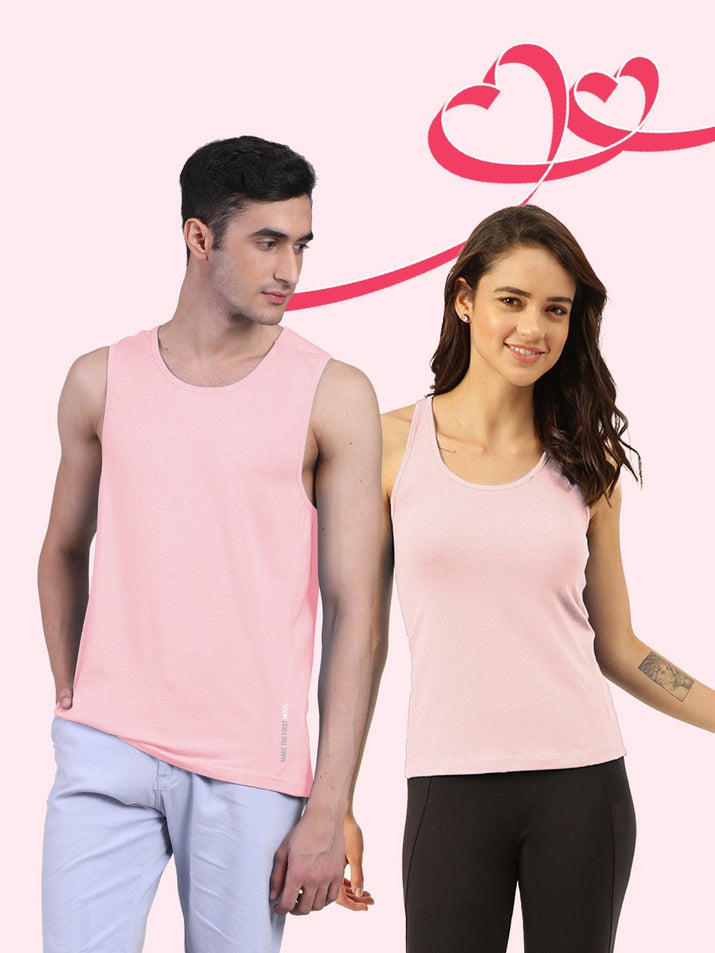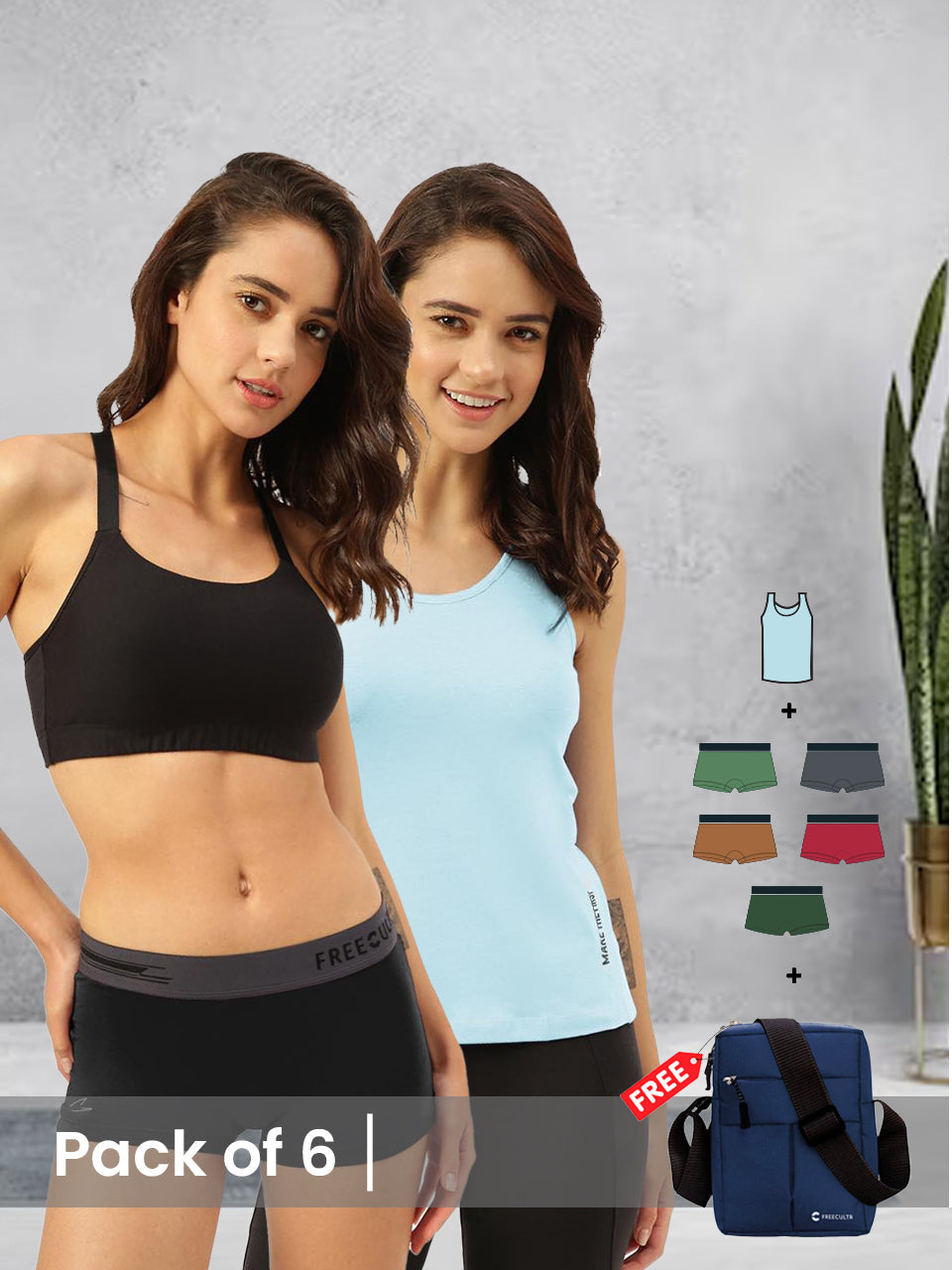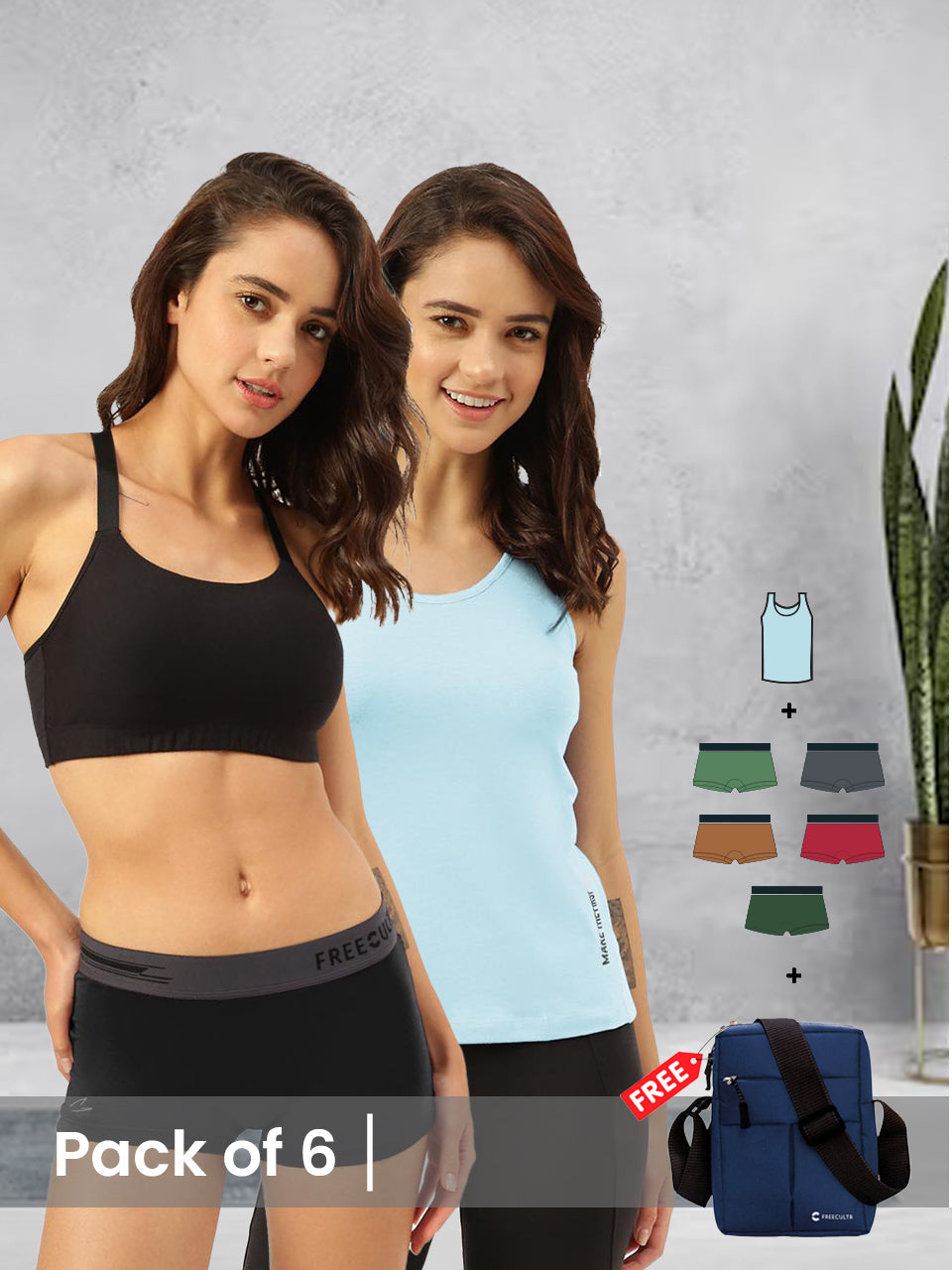
Understanding the Tank Top: More Than Just a Basic
Often perceived as a simple undergarment or a casual warm-weather staple, the humble tank top holds a significant place in both fashion and functional apparel. Far from being merely a sleeveless shirt, the modern tank top is a marvel of design and material science, offering unparalleled versatility for layering and performance. Its roots trace back to early 20th-century swimwear, specifically the "tank suit" worn in swimming pools, known as "tanks." Over time, the top portion evolved into a standalone garment, gaining popularity among athletes for its unrestricted movement and cooling properties, before becoming a mainstream fashion item.
Today, a tank top is defined by its sleeveless design, typically featuring wide or narrow straps and a variety of necklines. Its core function revolves around providing maximum arm mobility and facilitating airflow, making it an indispensable piece for diverse wardrobes and activities.
The Science of Cool: How Tank Tops Keep You Comfortable
The effectiveness of a tank top in keeping you cool and comfortable is rooted in fundamental principles of thermodynamics and material science. When the mercury rises or your activity levels surge, heat management becomes crucial. the tank top excels here thanks to several key factors:
- Enhanced Air Circulation The most obvious benefit of a tank top's sleeveless design is the exposure of the arms and underarms. This allows for significantly greater air movement around the torso, facilitating convection – the transfer of heat away from the body by air currents.
- Evaporative Cooling Our bodies naturally sweat to cool down. As sweat evaporates from the skin's surface, it carries away heat, resulting in a cooling sensation. A well-designed tank top, especially one made from moisture-wicking fabrics, helps to spread this sweat across a larger surface area, accelerating evaporation and enhancing this natural cooling process.
- Reduced Thermal Insulation By minimizing fabric coverage, a tank top reduces the amount of material trapping heat against the body. This lower thermal insulation is key in warm environments, preventing overheating.
The choice of material plays a paramount role in a tank top's cooling performance:
- Natural Fibers (e. g. , Cotton) Cotton tank tops are renowned for their softness and breathability. They absorb moisture well, which can feel comfortable initially. they tend to retain sweat, making them less ideal for high-intensity activities where quick drying is essential. But, for casual wear in moderate heat, a cotton tank top is a classic choice.
- Synthetic Fibers (e. g. , Polyester, Nylon, Blends) Modern synthetic tank tops are engineered for performance. Fabrics like polyester and nylon are inherently moisture-wicking, meaning they draw sweat away from your skin to the fabric's outer surface, where it can evaporate quickly. They are also often lightweight, durable. resistant to shrinking and wrinkling. Blends often combine the best attributes, offering breathability with enhanced drying capabilities.
Essential Layering: Mastering the Art of the Tank Top
The tank top's true genius lies in its versatility as a layering piece. It's not just for summer; it's a year-round foundational garment that can elevate comfort and style in countless scenarios. Mastering the art of layering with a tank top means understanding its role as both a primary garment and a strategic underlayer.
- The Core Base Layer A well-fitted tank top serves as an excellent base layer under virtually any outer garment. Under a button-down shirt, a sweater, a blazer, or even a light jacket, it provides an extra layer of comfort, absorbs sweat. prevents outer layers from clinging or becoming soiled. For instance, in a professional setting, a smooth, neutral-colored tank top worn under a dress shirt can prevent transparency and add a polished look without adding bulk.
- Standalone Statement In warmer climates or during intense physical activity, the tank top shines as a standalone piece. A stylish ribbed tank top paired with jeans or shorts offers a classic, relaxed look. For a workout, an athletic tank top provides maximum freedom of movement and sweat management, allowing you to focus on performance. Many find a racerback tank top particularly comfortable for gym sessions due to its design that allows for full range of motion for the shoulders.
- Transitional Styling As seasons change, the tank top becomes invaluable. On a cool spring morning, you might wear a tank top under a cardigan, shedding the outer layer as the day warms up. In the evening, it can be layered under a denim jacket or a flannel shirt for a casual, layered aesthetic. This adaptability makes the tank top a smart investment for a dynamic wardrobe.
From a personal perspective, I've found that a high-quality, seamless tank top can be a game-changer for international travel. It packs small, dries quickly. can be worn under almost anything, from hiking shirts to more formal attire, making it incredibly versatile for varying climates and activities without adding significant weight to luggage.
Performance Powerhouse: Tank Tops in Action
Beyond casual wear, the tank top is a true workhorse, particularly in the realm of physical activity and demanding environments. Its design directly contributes to enhanced performance and comfort across a spectrum of real-world applications.
- Athletic Endeavors For athletes, the tank top is often the garment of choice. Runners appreciate the minimal fabric and excellent ventilation, which prevents overheating on long runs. In the gym, lifters benefit from the unrestricted movement around the shoulders and arms, crucial for exercises like overhead presses or pull-ups. Yoga practitioners and Pilates enthusiasts find that a fitted tank top allows for a full range of motion and helps instructors observe body alignment. Basketball players and other team sports athletes often opt for tank tops for the same reasons – unparalleled freedom and breathability during intense, dynamic movements.
- Outdoor Adventures Hikers in warm weather often layer a moisture-wicking tank top under a sun-protective shirt, allowing them to shed the outer layer when the sun is less intense or during high-exertion climbs. Climbers and boulderers value the tank top for its ability to keep them cool while offering complete arm mobility, essential for reaching and gripping.
- Work and Everyday Life In professions that involve physical labor or hot environments, such as construction, landscaping, or kitchen work, a performance tank top can significantly improve comfort and reduce fatigue. Even for everyday tasks like gardening or cleaning, the cooling properties of a good tank top are noticeable. For individuals living in consistently warm climates, the tank top moves beyond performance wear to become a daily essential, providing a comfortable foundation for most outfits.
Consider the case of a professional marathon runner training in a humid climate. They rely on advanced synthetic tank tops that not only wick sweat but might also feature anti-odor technologies and seamless construction to prevent chafing. This specialized tank top isn't just clothing; it's a piece of performance equipment designed to optimize their body's thermoregulation and maximize their comfort over grueling distances.
Choosing the Right Tank Top: A Buyer's Guide
Selecting the perfect tank top involves more than just picking a color. Understanding the nuances of materials, fit. features will ensure you get a garment that meets your specific needs for comfort, style. performance.
Material Comparison
The fabric is perhaps the most critical factor, dictating breathability, moisture management. feel against the skin.
| Material Type | Pros | Cons | Ideal Use Cases |
|---|---|---|---|
| Cotton | Soft, breathable, comfortable, absorbent, natural fiber. | Retains moisture, slow-drying, can feel heavy when wet, prone to shrinking. | Casual wear, lounging, light activity in moderate temperatures. |
| Polyester | Moisture-wicking, quick-drying, durable, wrinkle-resistant, good for performance. | Can feel less natural, may retain odors if not treated, less breathable than cotton for some. | High-intensity workouts, athletic wear, hot and humid conditions. |
| Nylon | Extremely strong, elastic, smooth, quick-drying, good moisture-wicking. | Less breathable than some other synthetics, can be more expensive. | Performance wear, swimwear, active sports where durability is key. |
| Blends (e. g. , Cotton-Poly) | Combines benefits of both: softer than pure synthetic, better wicking than pure cotton, good shape retention. | Properties vary greatly depending on ratio; may still retain some moisture. | Versatile for active casual, light workouts, transitional layering. |
| Rayon/Viscose | Soft, drapes well, breathable, good absorption, feels cool to the touch. | Can wrinkle easily, less durable when wet, not ideal for heavy sweating. | Fashion layering, casual wear, comfortable lounging. |
Fit and Style Considerations
- Loose vs. Fitted A loose-fitting tank top offers maximum airflow and a relaxed aesthetic, ideal for casual wear or very hot conditions. A fitted tank top, often with stretch, is preferred for athletic activities where excess fabric could hinder movement, or for layering smoothly under other garments.
- Necklines
- Scoop Neck A classic, rounded, lower cut that offers a casual look.
- V-Neck Provides a slightly more elongated silhouette, good for layering under open shirts.
- Crew Neck A higher, rounded neckline, often found in athletic or more modest tank top styles.
- Racerback Features straps that meet in a 'Y' shape between the shoulder blades, optimizing shoulder mobility, popular in sports bras and athletic tank tops.
- Strap Width Wider straps offer more coverage and support, while narrower spaghetti straps provide a delicate, feminine look, often seen in fashion-forward tank tops or camisoles.
Care and Maintenance: Maximizing Your Tank Top's Lifespan
Proper care is essential to maintain the performance, appearance. longevity of your tank tops, particularly those made from technical fabrics. Following these guidelines will help ensure your favorite tank top remains a staple in your wardrobe for years to come.
- Read the Label Always start by checking the care tag. Specific fabric blends or treatments (like anti-odor coatings) may require unique washing instructions.
- Washing Temperature
- Cotton Tank Tops Can typically be washed in warm or cold water. Warm water is effective for dirt. cold water helps prevent shrinking and fading.
- Synthetic Tank Tops Always wash in cold water. Hot water can break down synthetic fibers, reduce elasticity. diminish moisture-wicking properties.
- Detergent Choice Use a mild detergent. Avoid harsh chemicals, bleach, or fabric softeners, especially for performance fabrics. Fabric softeners can clog the pores of moisture-wicking fabrics, reducing their effectiveness. If your performance tank top has developed an odor, consider using a sports-specific detergent designed to neutralize smells.
- Washing Cycle For most tank tops, a gentle or delicate cycle is sufficient. If washing a mixed load, consider placing delicate tank tops in a mesh laundry bag to protect them from snags or stretching.
- Drying
- Air Drying This is the safest method for almost all tank tops, especially synthetics. Hang them or lay them flat to dry. It preserves fabric integrity, prevents shrinking. saves energy.
- Machine Drying If you must machine dry, use the lowest heat setting. High heat can damage elastic fibers, cause shrinkage. reduce the lifespan of your tank top. Remove promptly to avoid wrinkles.
- Dealing with Stains and Odors For sweat stains, pre-treat with a stain remover or a paste of baking soda and water before washing. For persistent odors in synthetic tank tops, a pre-soak in a solution of white vinegar and water (1 part vinegar to 4 parts water) for 30 minutes can be very effective before a regular wash cycle.
Innovations in Tank Top Technology
The evolution of the tank top is far from over. Manufacturers are continuously pushing the boundaries of textile science and design to enhance comfort, performance. sustainability. These innovations are transforming the simple tank top into a high-tech garment.
- Anti-Odor Treatments Many modern performance tank tops are infused with silver ions or other antimicrobial agents. These treatments inhibit the growth of bacteria that cause body odor, allowing the garment to stay fresher for longer, even after intense workouts. This is a significant advantage for athletes and travelers alike.
- Seamless Construction Traditional garments have seams that can cause chafing, especially during repetitive motions. Seamless tank tops are knitted in a circular fashion, eliminating side seams and often reducing shoulder seams, leading to a smoother, more comfortable fit that minimizes irritation. This is particularly beneficial for long-distance runners and those with sensitive skin.
- Temperature-Regulating Fabrics Beyond basic wicking, some advanced tank tops incorporate technologies that actively help regulate body temperature. This can include phase-change materials that absorb and release heat, or fabrics with micro-ventilation zones strategically placed in high-sweat areas to enhance cooling. For example, a tank top might have a more open knit pattern under the arms and across the back.
- UV Protection For outdoor enthusiasts, tank tops with UPF (Ultraviolet Protection Factor) ratings are becoming more common. These fabrics are designed to block a significant portion of harmful UV rays, offering an essential layer of sun protection without compromising on breathability or comfort. While not fully covering, a UPF-rated tank top still offers protection to the covered skin.
- Sustainable Materials The industry is also seeing a shift towards more environmentally friendly options. Tank tops made from recycled polyester, organic cotton, bamboo, or Tencel (lyocell) offer excellent performance characteristics while reducing environmental impact. These materials often boast natural breathability and moisture-wicking properties, coupled with a soft feel.
Conclusion
Having explored the tank top's undeniable prowess, it's clear this isn't just a simple undergarment; it's a strategic foundational piece for any modern wardrobe. Don't merely relegate it to gym sessions or sweltering days; embrace its versatile potential. My personal tip? Invest in a high-quality seamless tank made from a blend like modal or Tencel. I’ve found these fabrics offer exceptional breathability and a smooth finish, making them ideal for layering under a lightweight blazer for a chic, effortless look – a subtle nod to the current quiet luxury trend. The beauty of the tank top lies in its adaptable nature, providing that essential cool performance whether you're battling humidity or seeking an extra layer of comfort. It truly bridges the gap between functional innerwear and a stylish outer layer. So, go ahead and elevate your everyday style; experiment with textures, colors. layering combinations. Unlock the full potential of this humble yet mighty garment. experience the unparalleled comfort and confident versatility it brings to your daily ensemble.More Articles
tank top for woman – Essential Layering & Freedom of Movementtank top for woman – Breathable Comfort & Versatile Style
inner wear for woman – Gentle Fabric & Invisible Under Clothing
inner wear for woman – Seamless Fit & All-Day Support
Woman's Gymwear – Performance Fabric & Enhanced Movement
FAQs
Why should I even bother with a tank top?
Tank tops are incredibly versatile! They're perfect as a lightweight base layer for added comfort and warmth in cooler weather, or worn on their own when it's hot for maximum breathability. They also offer full range of motion, making them great for workouts or just lounging.
How does a tank top help with layering?
Think of it as your secret weapon for comfort. A tank top provides a smooth, non-bulky layer under shirts, sweaters, or jackets, preventing chafing and adding an extra touch of warmth without making you feel overheated. It also helps preserve your outer layers by absorbing some sweat.
What kind of fabric makes a tank top good for staying cool?
Look for fabrics designed to breathe and wick moisture away from your skin. Materials like lightweight cotton blends, performance polyester, or even bamboo are excellent choices. They help evaporate sweat quickly, keeping you feeling dry and cool even when you're active or it's humid.
Are tank tops only for working out or super hot days?
Not at all! While they excel in those conditions, their breathability and comfort make them ideal for many situations. Wear one casually around the house, for light errands, as pajamas, or even under a slightly sheer top for modest coverage. They're more adaptable than you might think.
What's the main benefit of wearing a tank top for active use?
The biggest perk for active use is unrestricted movement and superior ventilation. With no sleeves, your arms have complete freedom. the minimal fabric allows for maximum airflow, helping regulate your body temperature more effectively during exercise.
Can I wear a tank top all year round?
Absolutely! In warmer months, they're fantastic on their own to beat the heat. During cooler seasons, they transform into an essential base layer, adding an extra bit of insulation against the cold while still maintaining a sleek profile under other clothing.
Are tank tops really that comfortable?
They totally are! The minimalist design means less fabric to bunch up or restrict you. With the right fit and material, a tank top feels incredibly soft against your skin, providing a sense of lightness and freedom that's hard to beat, whether you're relaxing or on the go.






